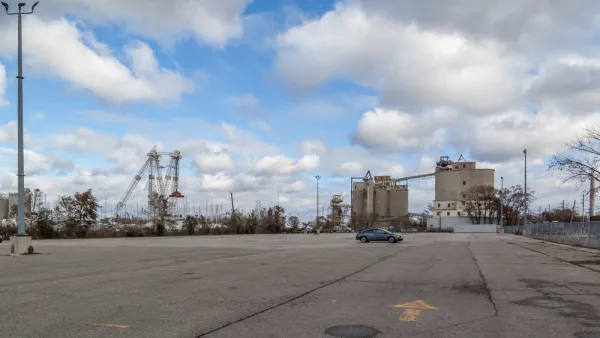The most ambitious example of the almost-mythological "smart city" will be tested in the Quayside district in Toronto as result of a partnership between Sidewalk Labs and Waterfront Toronto.

Last week saw the release of additional details about a partnership between Waterfront Toronto and Sidewalk Labs, a unit of Google's parent company, Alphabet. The announcement event builds fanfare beyond the initial revelation of the partnership earlier in October.
The partnership would "map out a new kind of neighbourhood on Toronto's waterfront that could demonstrate how data-driven technology can improve the quality of city life," according to an article by Alex Bozikovic.
Under the initial terms of the partnership, Sidewalk Labs will invest an initial $50 million into a year-long planning process for a 12-acre district on the Toronto waterfront.
"If the initiative proceeds, it would include at least 3.3 million square feet of residential, office and commercial space, including a new headquarters for Google Canada, in a district that would be a test bed for the combination of technology and urbanism," writes Bozikovic.
Sidewalk Labs also released this week a 220-page document laying out its initial ideas for the project, which Bozikovic summarizes as follows:
Within the area it develops, private cars would be banned; streets would be served by autonomous vehicles and freight robots moving in underground tunnels. Intelligent signals would manage traffic on pedestrian-friendly streets; buildings would be designed to be highly flexible, constructed using modular units that are produced nearby. These would be home to what Sidewalk describes as a "radical" mix of offices, retail, residence and maker spaces, a blend which would challenge existing zoning and building-code regulations.
For additional reading on the technological and urban ambition of the Waterfront Toronto-Sidewalk Labs partnership, see also an article by Emily Badger for The New York Times.
FULL STORY: Google's Sidewalk Labs signs deal for 'smart city' makeover of Toronto's waterfront

National Parks Layoffs Will Cause Communities to Lose Billions
Thousands of essential park workers were laid off this week, just before the busy spring break season.

Retro-silient?: America’s First “Eco-burb,” The Woodlands Turns 50
A master-planned community north of Houston offers lessons on green infrastructure and resilient design, but falls short of its founder’s lofty affordability and walkability goals.

Delivering for America Plan Will Downgrade Mail Service in at Least 49.5 Percent of Zip Codes
Republican and Democrat lawmakers criticize the plan for its disproportionate negative impact on rural communities.

Test News Post 1
This is a summary

Test News Headline 46
Test for the image on the front page.

Balancing Bombs and Butterflies: How the National Guard Protects a Rare Species
The National Guard at Fort Indiantown Gap uses GIS technology and land management strategies to balance military training with conservation efforts, ensuring the survival of the rare eastern regal fritillary butterfly.
Urban Design for Planners 1: Software Tools
This six-course series explores essential urban design concepts using open source software and equips planners with the tools they need to participate fully in the urban design process.
Planning for Universal Design
Learn the tools for implementing Universal Design in planning regulations.
EMC Planning Group, Inc.
Planetizen
Planetizen
Mpact (formerly Rail~Volution)
Great Falls Development Authority, Inc.
HUDs Office of Policy Development and Research
NYU Wagner Graduate School of Public Service




























